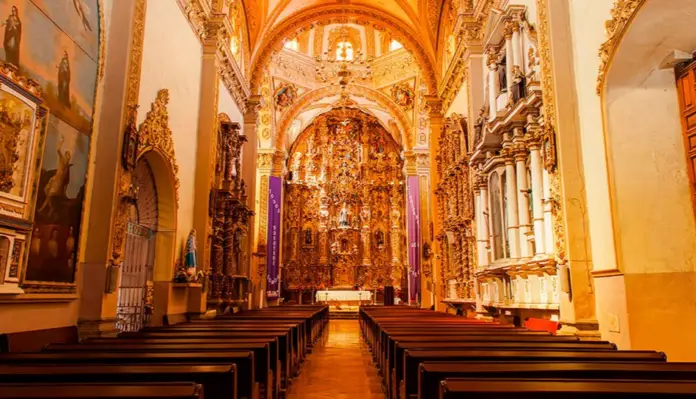Mexico’s Magical Towns are destinations renowned for their cultural, historical, and natural richness. Each one reflects living traditions, distinctive architecture, cuisine, and local festivities that attract both domestic and international tourists. These towns offer travelers an authentic experience that connects with the country’s roots and diversity.
In the state of Tlaxcala, you can discover some of these charms, thanks to its proximity to Mexico City and its historical heritage. Among them is Huamantla, a Magical Town that combines the mysticism of its customs with captivating landscapes.
Huamantla, the heart of Tlaxcala
Located in the heart of the state of Tlaxcala, Huamantla is distinguished not only by its cultural and historical richness, but also by its natural surroundings and unique traditions. This place, part of the Pueblos Mágicos program since 2007, is located 2,400 meters above sea level and houses a wide variety of attractions that make it a must-see destination for visitors.
Among its most notable treasures is the Huamantla Codex, considered the largest of its kind in the world and one of the few surviving Otomi cultural documents.
Huamantla is located in a valley surrounded by haciendas, hermitages, and French-style architecture that reflects its history and traditions. Its name comes from Nahuatl and can be translated as “place of abundant trees.” This municipality is also known for its ancient livestock tradition, its skill in puppetry, and the art of sawdust rugs, one of the most emblematic cultural expressions of the region.
La Malinche National Park, which occupies a large part of Huamantla, is another of its main attractions. This park includes one of Mexico’s highest volcanoes, which in pre-Hispanic times was considered a deity linked to rain.
Among Huamantla’s attractions are the Basilica of the Virgin of Charity, the Franciscan Convent, the Temple and Former Convent of San Luis Obispo, and the Roseta Aranda National Puppet Museum (MUNATI), which pays tribute to the region’s puppetry tradition. Other highlights include the Bullfighting Museum, the City Museum, and several pulque haciendas, such as Soltepec, Tenexac, and Casa Malinche, which reflect the historical importance of pulque production in the area.
Huamantla’s festivities are another of its major attractions. During the month of August, the Feast of the Virgin of Charity is celebrated, which includes activities such as the making of floral carpets, serenades, a handmade balloon festival, donkey and car races, plays, and children’s events. Among this celebrations is “The Night That Nobody Sleeps,” a tradition that takes place in the first half of August and attracts thousands of visitors. In addition, the Rosete Aranda International Puppet Festival takes place in October, featuring national and international companies with performances and discussions.

Local cuisine is also a distinctive element of Huamantla. One of its most representative traditional sweets is muéganos, cookies made with piloncillo and anise water that are widely recognized in the region.
The Huamantla Municipal Palace houses a reproduction of the Huamantla Codex, a cartographic and historical document considered a cultural treasure. This codex, along with other historical and architectural elements, reinforces Huamantla’s importance as a monumental and heroic area, especially during the American invasion.
With a unique combination of history, culture, nature, and traditions, Huamantla is positioned as a destination that offers an enriching experience for those seeking to explore the richness of the state of Tlaxcala.
Source: infobae




